NCAA D3 Season Wrap-up
Melissa has lots of thoughts on the close of the NCAA D3 season.
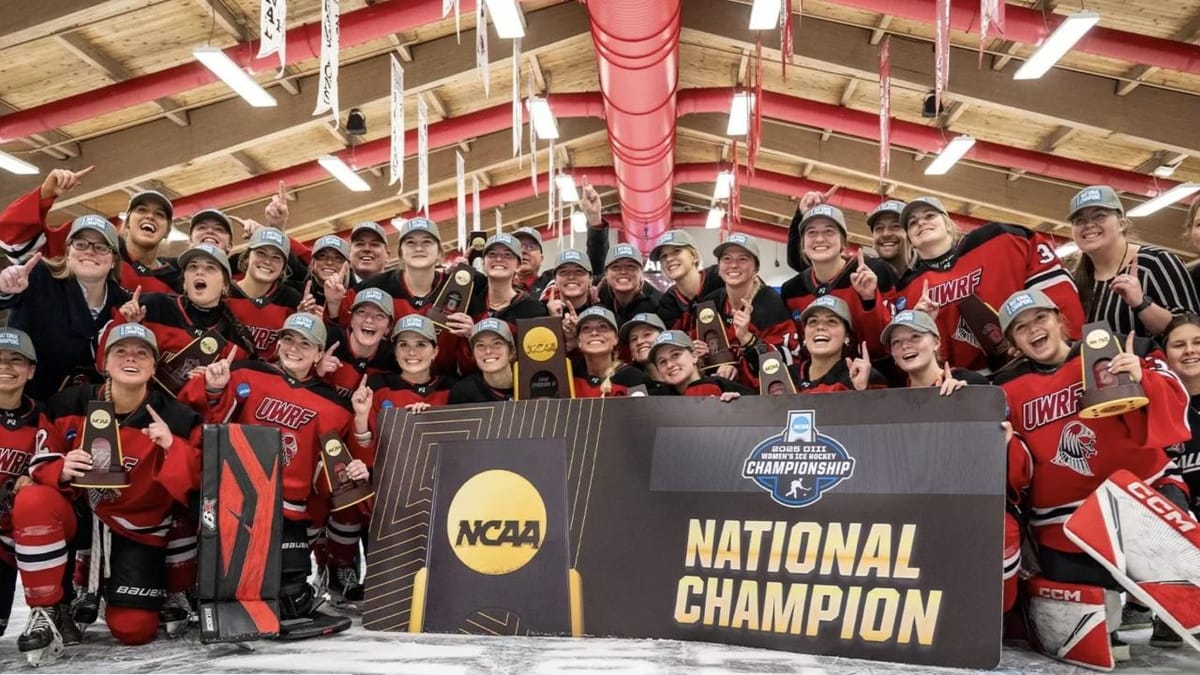
It’s been a minute! In the month or so since the national championship, the eyes of the women’s hockey world turned to watch Women’s Worlds. While no D3 players participated in the top IIHF tournament this year, a handful of players on D3 rosters this year were able to participate in other IIHF Worlds divisions, including Aimee Seppenwolde (Wesleyan/Netherlands) and Simone Bednarik (Oswego/Slovakia) in Division I, Group A; Chamonix Jackson (SUNY Canton/Great Britain) and Si-Hyun Kang (Norwich/Korea) in Division I, Group B; Renee Ng (Wilkes/Hong Kong) in Division II, Group B; Klara Müller (Chatham/Lithuania) and Milica Velcek (Wilkes/Serbia) in Division III, Group A; and Pnina Basov (Lawrence/Israel) in Division III, Group B. It’s great to see NCAA hockey at all levels become more global, and it’s even better to see D3 represented internationally.
Back at home, congratulations to the University of Wisconsin-River Falls Falcons on repeating as D3 women’s hockey champions! UWRF beat Amherst, 3-1, in a game pitting the nation’s top scoring offense (featuring the D3 points leader and Laura Hurd Award winner, Bailey Olson) against the nation’s top scoring defense (featuring the 3-time First Team East All-American goalie, Natalie Stott). The Falcons are the first team to repeat since Plattsburgh, which won four straight championships from 2014 to 2017. The complete championship game is available to stream, as are the two semifinal games (Amherst beat Middlebury, 3-1, and UWRF defeated Augsburg, 4-2).
The Frozen Four
To me, the most notable part of the entire NCAA tournament is that the final game was essentially decided by video review, something that could not happen in D3 at any time before the Frozen Four. The event occurred with 12:52 remaining in the second period of the game; in the game video, it starts a bit past 41 minutes in. At the time, UWRF was up 1-0, and the puck went in the net again, seemingly to put UWRF up 2-0. But the officials discussed the play and determined that the puck had been kicked into the net: no goal and the score remained 1-0. The UWRF coaching staff challenged the call. The referees looked at the video, and ultimately determined that although the puck deflected in off a Falcon skate blade, there was no kicking motion and the goal should count. This goal, initially disallowed but later confirmed on a challenge, held up as the game-winning goal.
D1 hockey fans are accustomed to video reviews and D1 arenas have replay capability. But in D3 games before the Frozen Four, video reviews may not be used even if video exists. There are no coaches’ challenges, nor can officials review play to look for head contact or other penalties. Whatever gets called (or not called) on the ice stands, until championship weekend when the rules change. While I understand the desire to “get it right” in the most important games of the season, I also find it odd that the rules change for them. In fact, in the D3 women’s hockey bid specs document, item 10 of the facility requirements on page 6 explicitly states, “The facility must be equipped with a video replay system that includes above-goal cameras, or have the capability to mount cameras, for the purpose of reviewing goals during competition. The NCAA shall bear the cost to operate and/or set up the replay system.” In this Zoom era, cameras are cheaper than ever, as are tablets that could be used to view the video. At the very least, I would like to see the NCAA have video review available for all tournament games, and I don’t think it unreasonable that video reviews be expanded to conference tournaments or even all D3 games.
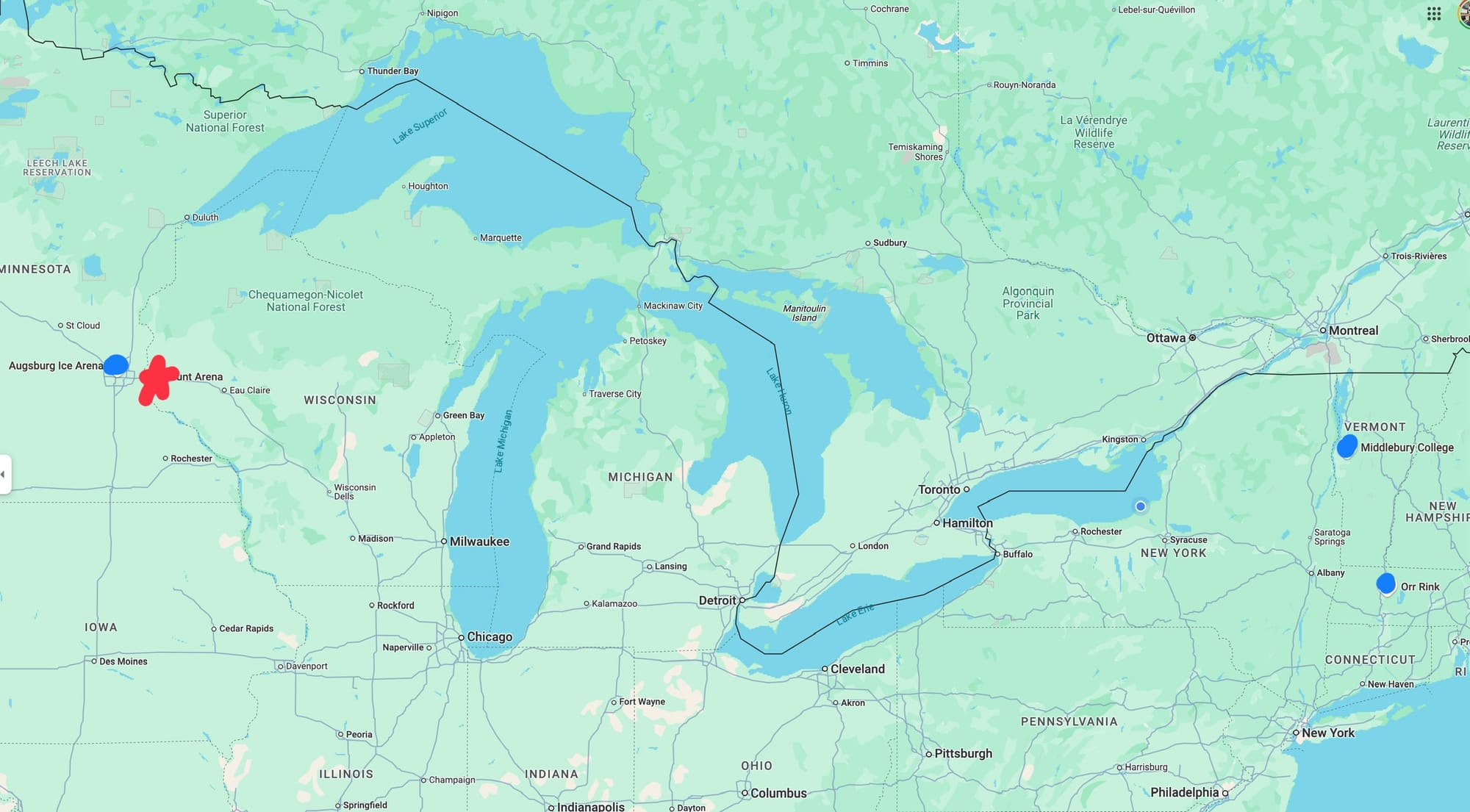
Not only was this year’s result a repeat of last year, the site was a repeat of last year. But last year, River Falls hosted as the home of the top seed in the Frozen Four, in the traditional selection process for D3 women’s hockey. This year, River Falls was a predetermined host site, named in June of 2024 through a bidding process as the 2025 host. So even though River Falls was the lowest seed still playing, they were able to enjoy home ice again this year. The only other time since its inception that the D3 women’s Frozen Four was played at a preselected site was a one-off experiment in 2013, when the University of Wisconsin-Superior hosted Middlebury, Plattsburgh, Gustavus Adolphus, and eventual champion Elmira. While having the host team participating undoubtedly helps the attendance and the atmosphere, I’m curious whether River Falls got a bit of an unearned bump from playing at home (albeit in their road uniforms and without getting last change) and whether Augsburg, the top seed, felt put out by losing home ice that might have been theirs in another year. Next season, the D3 women will return to tradition and be back at a campus site, but for 2027, perpetual contender Plattsburgh has already been selected to host the championship weekend.
The two D3 hockey championships are the only ones of the 90 total NCAA championships that are not always held at a predetermined site; once the current pilot program alternating a campus site with a predetermined site for both men and women ends, it will be interesting to see the direction the NCAA takes. Travel planning is easier for family and fans of the participating teams, fans who just like to watch good hockey regardless of the teams playing, and the teams themselves when the destination is known ahead of time. But when the championship takes place at the home rink of one of the participating teams, the location often isn’t announced until the day after the quarterfinal games. Everyone has only a few days to make travel arrangements. The added difficulty and reduced time can be enough for some fans to stay home, especially if the location is far enough for driving to be impractical. Nonetheless, at a campus site, there’s always one team that doesn’t have to travel and whose fans can easily attend, and for that team, hosting is more than a privilege. It’s unclear to me why only D3 hockey is special enough to use a campus host half the time, but hosting teams aside, it’s a specialness that I wouldn’t mind seeing end.
One final comment about the championship: From the beginning of the D3 women’s championship in 2002 (and even for two years before that, when a championship was conducted under the auspices of the AWCHA) through 2022, all the winners had been eastern teams. But from 2023 on, a western team has been crowned each year. Is the recent western domination a sign that the balance of D3 power is moving west, matching the historical D1 western dominance? There are so few interregional D3 games that it’s difficult to make a meaningful comparison, so postseason results are as good an indicator as we have.
Earlier Rounds
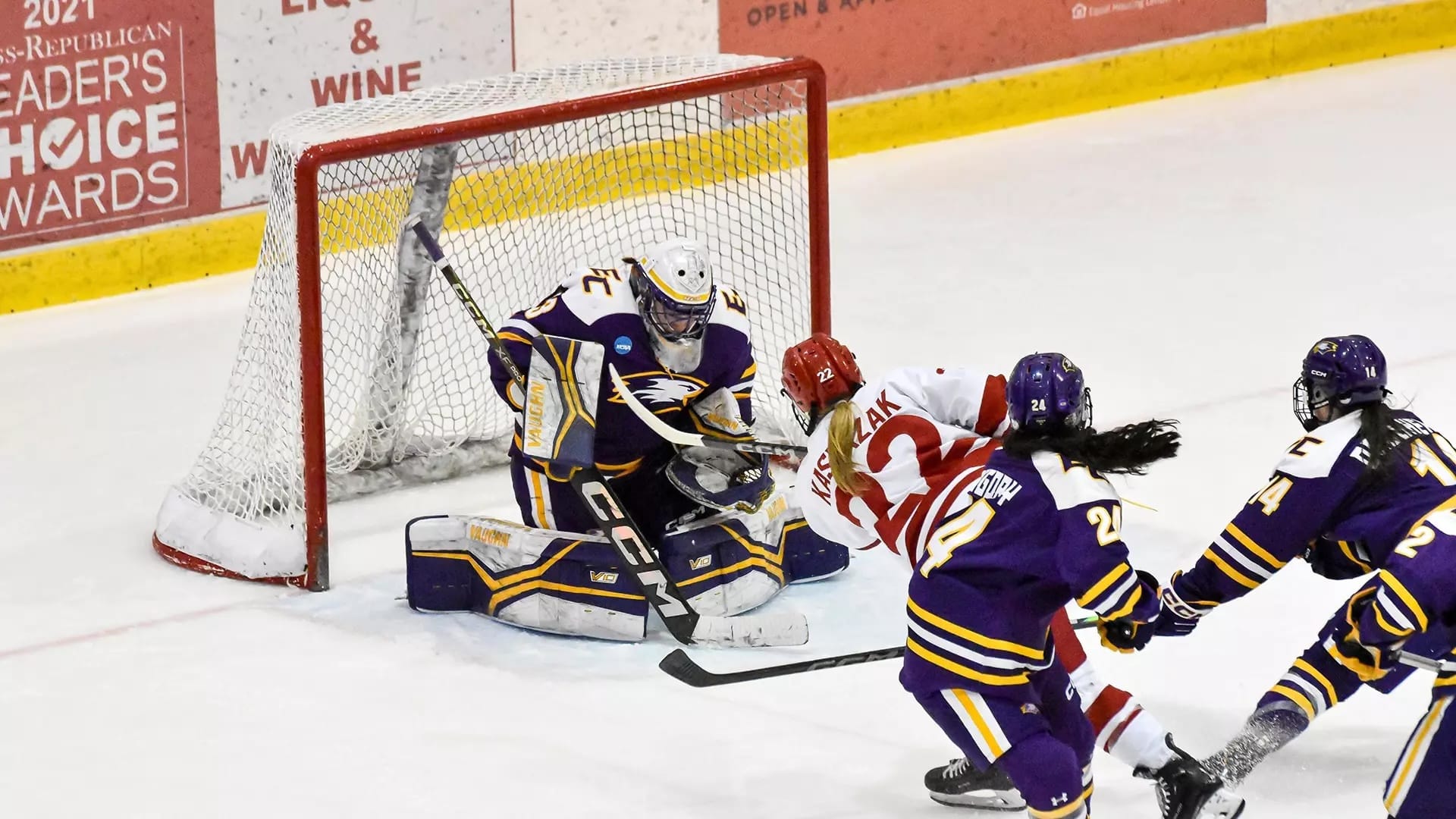
As the bracket was set up, first round games were held at the rink of the higher seed. The winners moved on to play the following weekend at the four top seeds, who had an extra week to rest. In 3/4 of the first round games, home ice did not prove advantageous, as only Colby, facing Wilkes, avoided an upset. (Recall that Colby secured the last at-large bid on the strength of a late-season tear, which continued into the postseason despite a slight hiccup in the NESCAC tournament semifinal.) Road winners in the first round were St. Norbert (at Gustavus Adolphus), Elmira (at onetime conferencemate Plattsburgh), and Nazareth (at Endicott, their first ever NCAA tournament win). Each of these teams went on to lose in the quarterfinals to a top seeded team that did not travel and had a first round bye: River Falls (over Elmira, just like in last year’s championship game), Middlebury (over Naz), Amherst (avenging their regular season sweep by Colby), and Augsburg (over St. Norbert). Whether the top seeded teams were just better, whether the extra week of rest was a factor, or whether home ice was truly advantageous, this round played out as the seeds predicted.
Other End-of-Season Honors
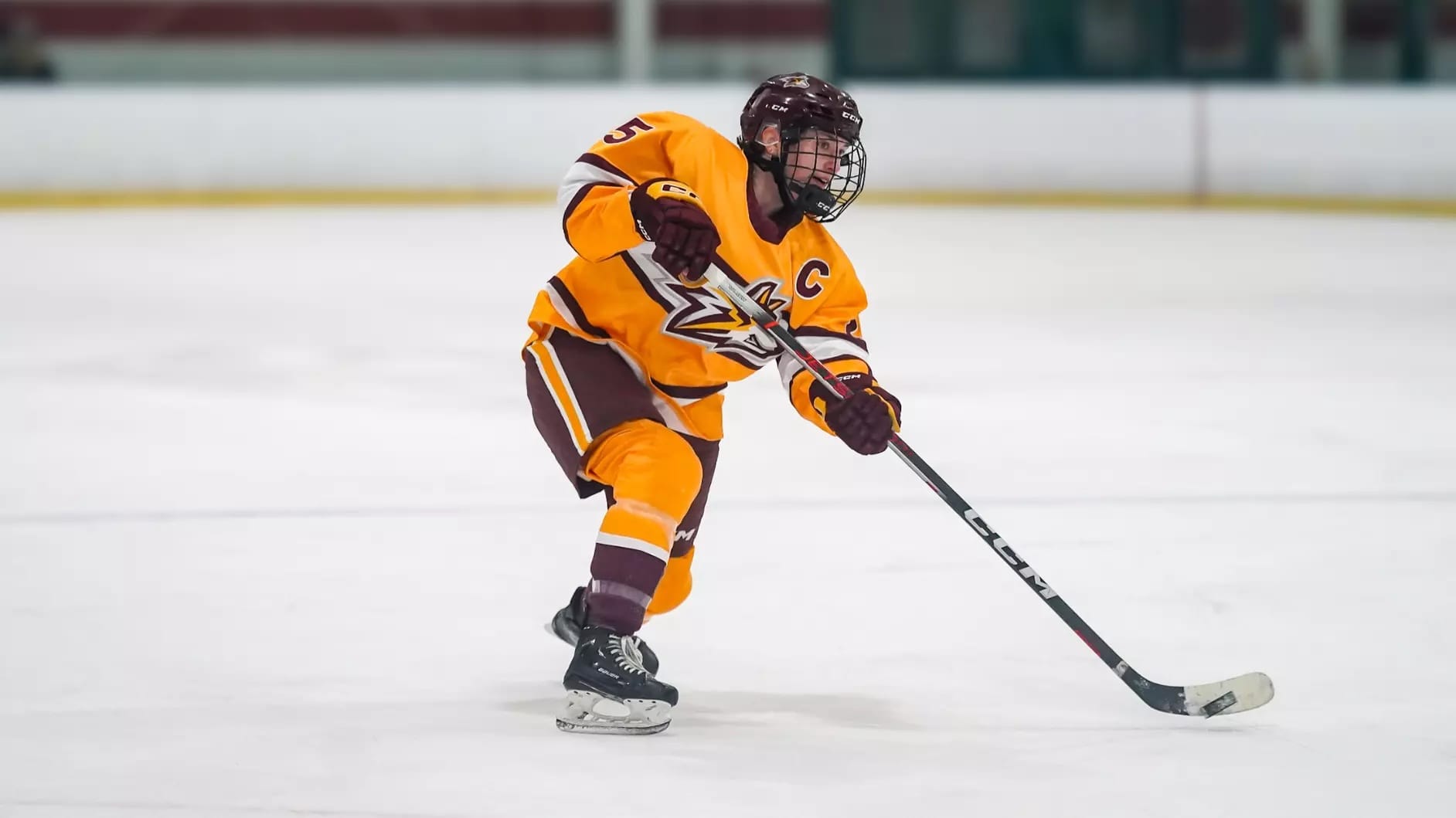
The American Hockey Coaches Association named five teams of D3 All-Americans, three in the east and two in the west. Players were selected from the all-conference first teams. While the honorees include many players from teams that saw NCAA tournament action and other teams that have historically contended for the title, I am always happy to see recognition go to players from teams less well represented in the record book. This year’s nontraditional school honorees include Sydney Bradley from Alvernia, Karahkwenhawe White from Arcadia, Claire Sammons from Connecticut College, Anna Dale from Lebanon Valley, Mack Hull and Lexi Levy from Oswego, Angela Hawthorne from Utica, and Erin Murray from William Smith.
The Laura Hurd Award goes to the best D3 player of the year, chosen from among the conference players of the year. This year’s honoree is senior forward Bailey Olson from UWRF. She was D3’s clear offensive leader this season, scoring 27 goals and adding 33 assists over 31 games. Her total of 60 points this season was 11 more than the next highest total. In a further sign of the shift in balance of power, every winner of the Laura Hurd Award since the pandemic break has been from a western team.
And the D3 coach of the year is Augsburg’s coach, Elizabeth Bauer. Bauer was promoted to head coach over the summer, after Augsburg’s previous coach, Michelle McAteer, left to become WCHA commissioner. Bauer led her relatively young team to a school record 24-3-1 record and a season that lasted through a semifinal loss in their first NCAA tournament ever. Bauer was not on the initial list of finalists for this award, as the MIAC’s COTY is Tracy Johnson, St. Olaf’s coach. But the list of finalists always includes the four coaches at championship weekend along with all the conference coaches of the year, so Bauer was added after the quarterfinals. Bill Mandigo, Middlebury's longtime coach and already a four-time honoree, and Amherst’s Jeff Matthews would have also been late additions to the ballot, as the NESCAC COTY was Marissa O'Neil from Bowdoin. (Joe Cranston, UWRF's coach, last year's COTY and this year's runner up, was already on the ballot as WIAC COTY.) Incidentally, these late additions mean that COTY voting cannot happen until after the quarterfinals when the ballot is finalized. I find this interesting because the conference awards are based on the regular season. However, every COTY has been the coach of a Frozen Four team (or its equivalent, before the NCAA sponsored a D3 women's championship), so it appears that a deep tournament run has an outsize effect on the voting.
What’s Coming?
There will be changes to D3 hockey next year. One big change should be the addition of a 13th NCAA tournament berth; this will be finalized at this spring’s committee meeting, based on 78 teams playing this season (78/6=13). Two new teams should begin play next year: Beloit (essentially replacing the team at closing Northland College) and St. John Fisher (starting from scratch). Another change will come in the form of conference reorganization and the related shuffling of tournament bids, as the multisport Little East Conference will add associate members and begin to sponsor hockey. Most of the LEC teams were members of the New England Hockey Conference this year. The orphaned teams have been making plans to join other conferences for next season, completing the NEHC’s dissolution. The UCHC will be a prime beneficiary of the reorganization, as the additions will give the conference enough members to maintain their autobid and end the grace period after one season. However, the LEC will not have enough core members playing women’s hockey to get an immediate autobid, so they will have an initial waiting period. The net change is that next season, D3 should be down to seven autobids but up to six(!) at-large bids.
But perhaps the biggest change looming has nothing to do with D3 hockey and everything to do with big-time D1 sports, in the form of the House settlement and the switch from scholarship limits to roster limits in all sports. Some D1 hockey players may be casualties of the new limit, looking at D3 schools for new homes. The wild ride of D1 sports is pointing at D3, and I’m buckling my seatbelt.


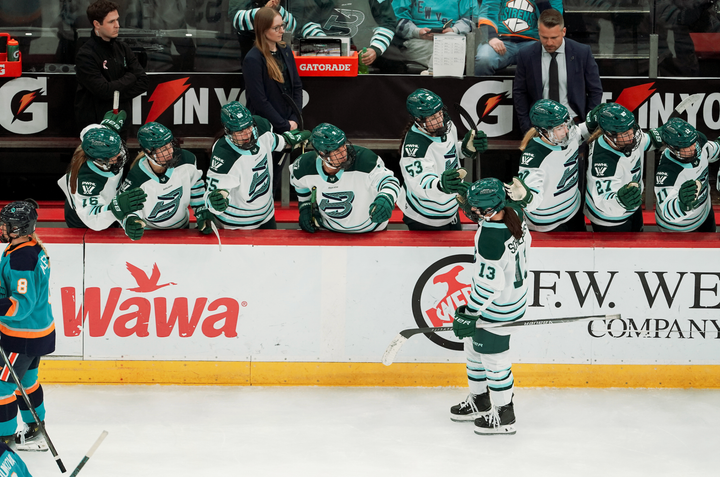
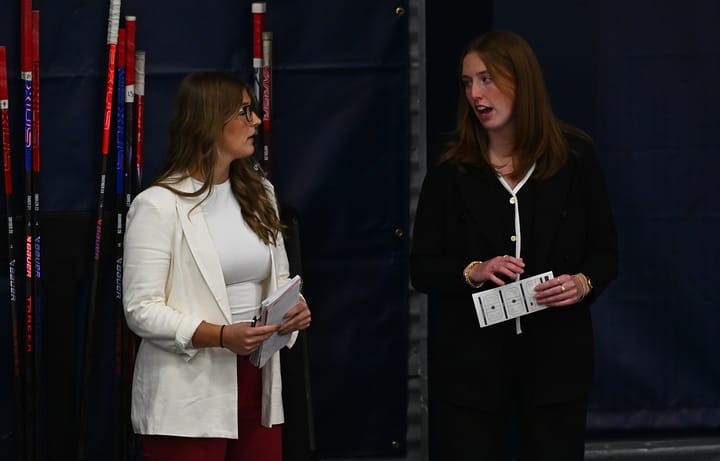
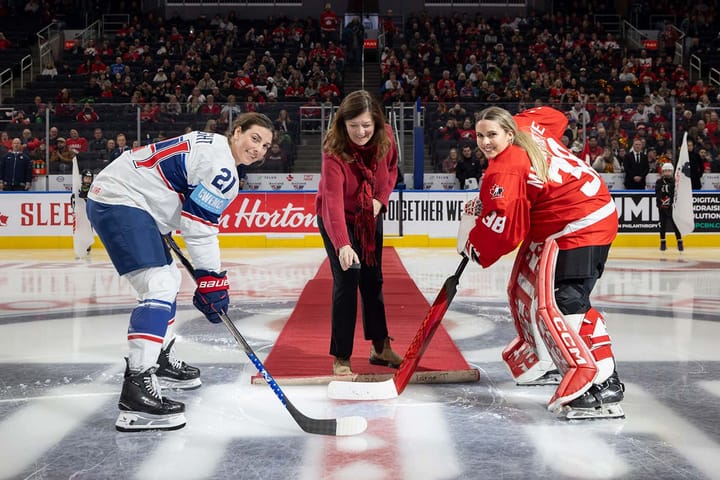
Comments ()